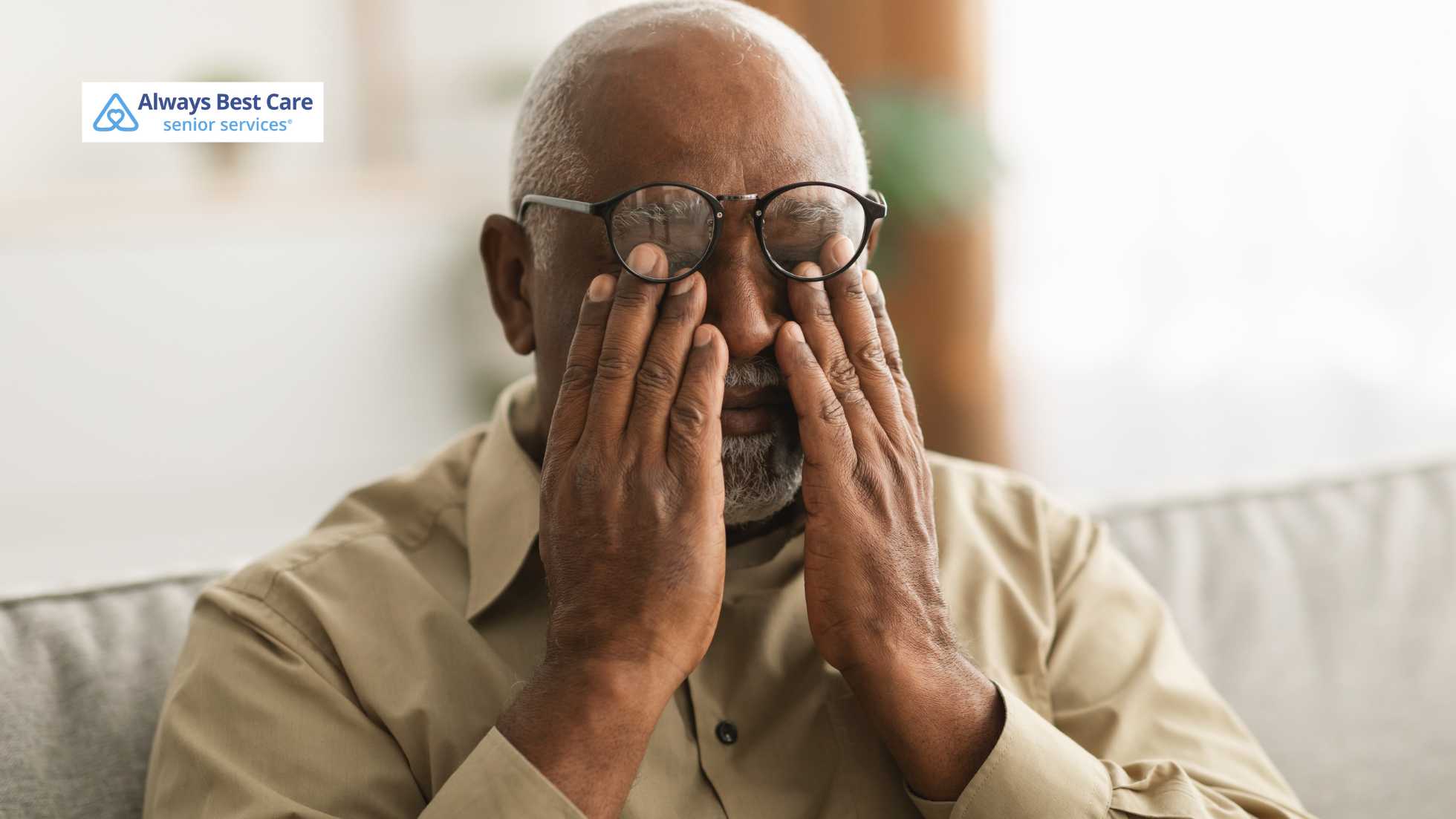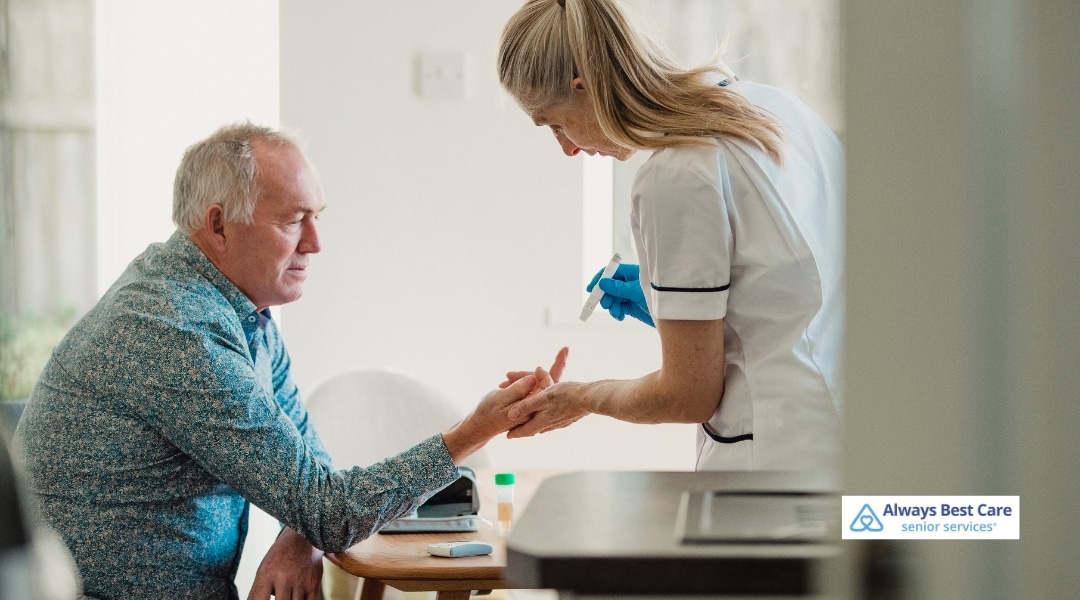Enhancing the Everyday Life of Seniors with Glaucoma

Living with glaucoma may come with its challenges, but it doesn’t have to limit your ability to enjoy a fulfilling and independent life.
With the proper adjustments at home, support from others, and proactive care, everyday life can remain bright and engaging.
Table of Contents
Understanding Glaucoma’s Impact on Daily Life
Glaucoma is a condition that gradually damages the optic nerve, often caused by increased pressure within the eye.
This damage leads to progressive vision changes that can alter how someone experiences daily life.
Recognizing these changes early is crucial for adapting and maintaining independence:
- Peripheral Vision Loss: One of the earliest signs of glaucoma is the loss of peripheral (side) vision, making driving or walking in crowded spaces more difficult. Tasks that require spatial awareness, such as climbing stairs or avoiding obstacles, may feel less intuitive, increasing the risk of accidents.
- Central Vision Challenges: Glaucoma progresses and can also affect central vision. This impacts reading, watching television, and recognizing faces. These challenges can be particularly frustrating, as they interfere with tasks that rely on detail and focus.
- Navigating Spaces: Vision changes make moving through familiar spaces more challenging. Poor depth perception or difficulty distinguishing objects can lead to tripping over furniture or misjudging steps. Seniors may need modifications or assistance to navigate their homes or public places safely.
- Impact on Emotional Well-Being: Glaucoma’s gradual nature often means that changes in vision are subtle at first, but as they progress, they can contribute to feelings of frustration or isolation. Recognizing these emotional challenges is as important as addressing the physical ones, as they directly affect quality of life.
- Importance of Early Diagnosis and Management: Catching glaucoma early through routine eye exams is critical to slowing its progression. Medicated eye drops, laser therapy, or surgery can help reduce intraocular pressure and preserve existing vision. Consistent management helps individuals adapt to changes more effectively and maintain independence.
Optimizing the Home Environment
Adapting the home environment to support vision changes is crucial for those with glaucoma. Thoughtful adjustments can significantly enhance safety, navigation, and overall confidence, making the home more comfortable and secure.
- Enhance Lighting for Better Visibility: Proper lighting is essential for eliminating dark areas and improving visibility. Install bright overhead lights in key areas like hallways, staircases, and bathrooms. Nightlights or motion-sensor lights provide consistent illumination for nighttime navigation. Opt for frosted bulbs or lampshades that diffuse light evenly to avoid glare.
- Reduce Clutter to Prevent Accidents: Cluttered spaces can lead to trips and falls, particularly for those with limited peripheral vision. Removing unnecessary items like loose shoes, bags, or small furniture keeps walkways clear. Designate storage areas for frequently used items like keys or reading glasses to keep everything organized and accessible.
- Secure Rugs and Flooring: Loose rugs and slippery floors can be hazardous. Use non-slip mats or pads to secure rugs in place, and consider replacing worn-out carpeting. Non-slip flooring in high-risk areas like kitchens and bathrooms provides additional grip and stability, reducing the risk of falls.
- Add High-Contrast Elements for Easier Navigation: High-contrast colors can help identify edges, furniture, and pathways. Apply brightly colored tape to stair edges, doorframes, and handrails for better visibility. The contrast between furniture and walls also helps distinguish objects in a room, making movement safer and more intuitive.
- Install Safety Features for Extra Support: Features like grab bars in bathrooms, handrails along staircases, and non-slip mats in bathtubs add an extra layer of security. These modifications are significant for seniors with reduced depth perception or balance challenges.
- Rearrange Furniture to Improve Flow: Rearranging furniture to allow for smoother navigation creates open pathways in high-traffic areas. Avoid sharp corners on furniture in frequently used spaces, or use corner protectors to minimize potential injuries.
Using Assistive Technologies
Technology is a valuable ally for those living with glaucoma.
Tools like screen readers, magnifying glasses, and voice-activated devices simplify everyday tasks and foster independence.
Medical alert systems can offer peace of mind, especially for those concerned about emergencies.
Prioritizing Eye Health With Lifestyle Choices
Supporting overall eye health through daily habits can make a meaningful difference.
A balanced diet rich in leafy greens, Omega-3s, and antioxidants helps protect vision.
Staying hydrated promotes eye function, while regular physical activity, like yoga or walking, improves circulation, benefiting the optic nerve.
Avoiding smoking and excessive alcohol use reduces risks associated with further vision deterioration.
Navigating Social and Emotional Challenges
Glaucoma can sometimes lead to feelings of isolation or frustration, but building connections and fostering emotional resilience is crucial.
Engaging in social activities, attending community events, or keeping up with loved ones can prevent loneliness.
Support groups and counseling offer a safe space to discuss challenges and build coping strategies, helping maintain a positive mindset.
Staying Active With Adaptive Activities
Staying active is vital for maintaining a sense of purpose, joy, and well-being, even with vision changes caused by glaucoma. Adaptive activities offer accessible ways to remain engaged, keep the mind sharp, and support emotional health, creating opportunities for fulfillment and connection:
- Engage with Audio Books and Podcasts: For those who find reading difficult, audiobooks and podcasts provide an enjoyable alternative. These options allow for exploring new topics, relaxation through storytelling, and mental stimulation, all without relying on vision. Many libraries and online platforms offer extensive audio collections tailored to diverse interests.
- Try Large-Print or Tactile Games: Adaptive games such as large-print puzzles, playing cards, or board games with raised markings are designed for those with limited vision. These activities encourage problem-solving, coordination, and social interaction, providing mental and emotional benefits.
- Explore Tactile Hobbies: Hobbies like knitting, crocheting, gardening, or sculpting rely on touch rather than sight. These tactile activities stimulate the senses and offer a creative outlet. Gardening, for instance, combines physical activity with the therapeutic benefits of connecting with nature.
- Incorporate Adaptive Physical Activities: Gentle exercises such as yoga, tai chi, or walking can be modified to suit those with vision challenges. These activities improve strength, balance, and flexibility while promoting relaxation. Local community centers or senior groups may offer classes designed for those with visual impairments.
- Join Music or Dance Programs: Music and dance are excellent adaptive activities requiring minimal vision reliance. Joining a choir, taking an instrument, or participating in guided dance classes fosters creativity and encourages physical movement. These group settings also provide valuable opportunities for social engagement.
- Participate in Community Events and Support Groups: Adaptive activities aren’t limited to solo endeavors. Community events, workshops, and support groups tailored for those with vision impairments create spaces for shared experiences and learning new skills. These interactions combat isolation and build a sense of belonging.
Minimizing Fall Risks
Vision changes can make everyday navigation more challenging, increasing the risk of falls.
Implementing safety measures like bathroom grab bars, handrails along stairs, and non-slip mats ensures safer mobility at home.
Regularly reviewing and updating these features keeps the environment aligned with evolving needs, reducing potential hazards.
Living Fully With Glaucoma
Glaucoma may shape how life is approached, but it doesn’t have to diminish its quality. With thoughtful adjustments, adaptive activities, and supportive care, embracing each day entirely is possible.
At Always Best Care of Birmingham, we help create a safe, supportive environment that empowers seniors to continue thriving at home. Let’s work together to make everyday life with glaucoma fulfilling and secure!
Discover Personalized Support with Always Best Care of Birmingham
Living with glaucoma doesn’t have to mean facing challenges alone. At Always Best Care of Birmingham, we specialize in creating personalized care plans prioritizing safety, comfort, and well-being. Whether you need assistance with daily tasks, help managing health concerns, or a compassionate companion, our dedicated team is here to support you.
Contact Always Best Care of Birmingham at (659) 200-5714 to learn more and schedule your free consultation. Let us work together to create a tailored care plan that ensures your loved one’s safety, comfort, and an active, enriching lifestyle.





